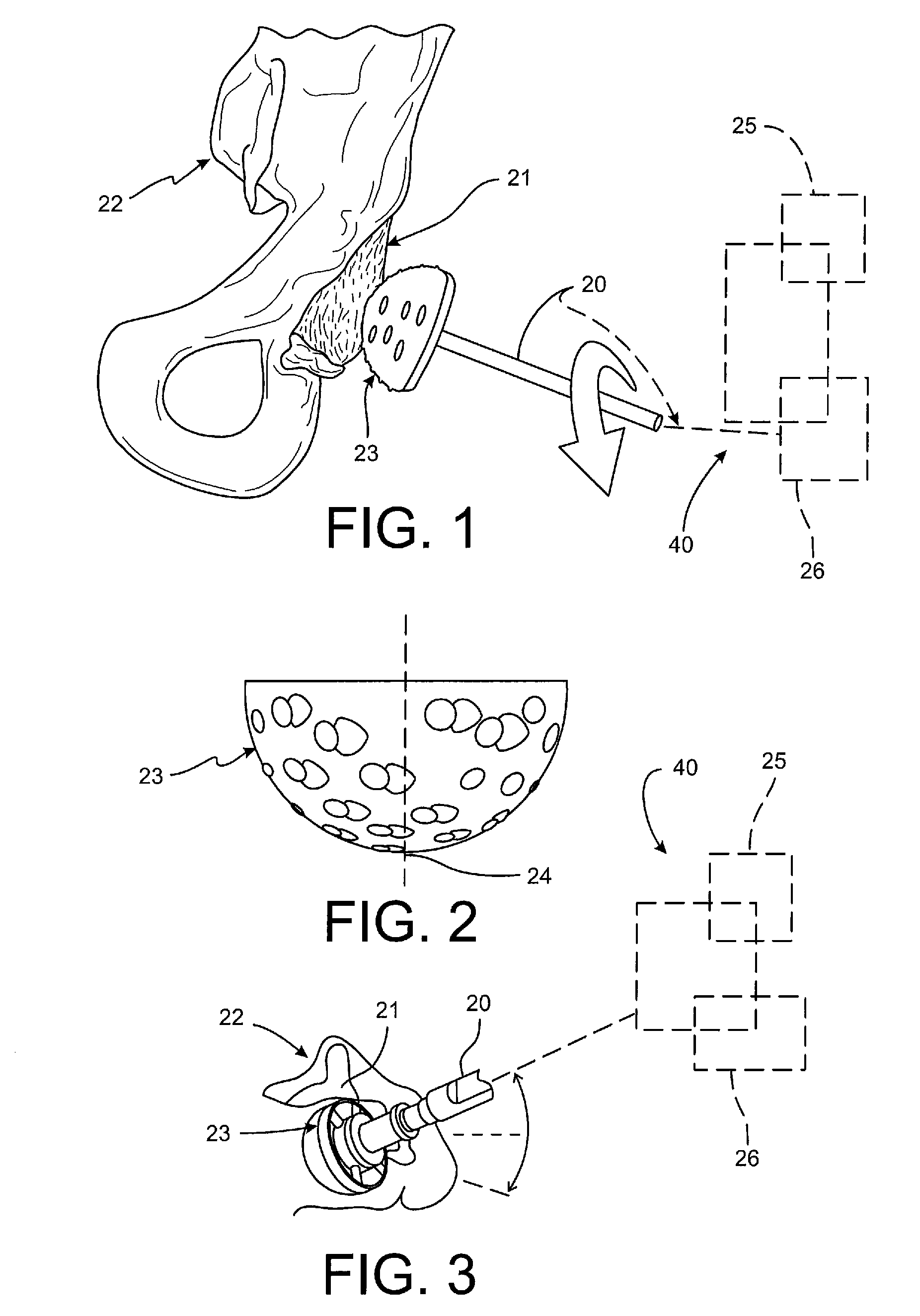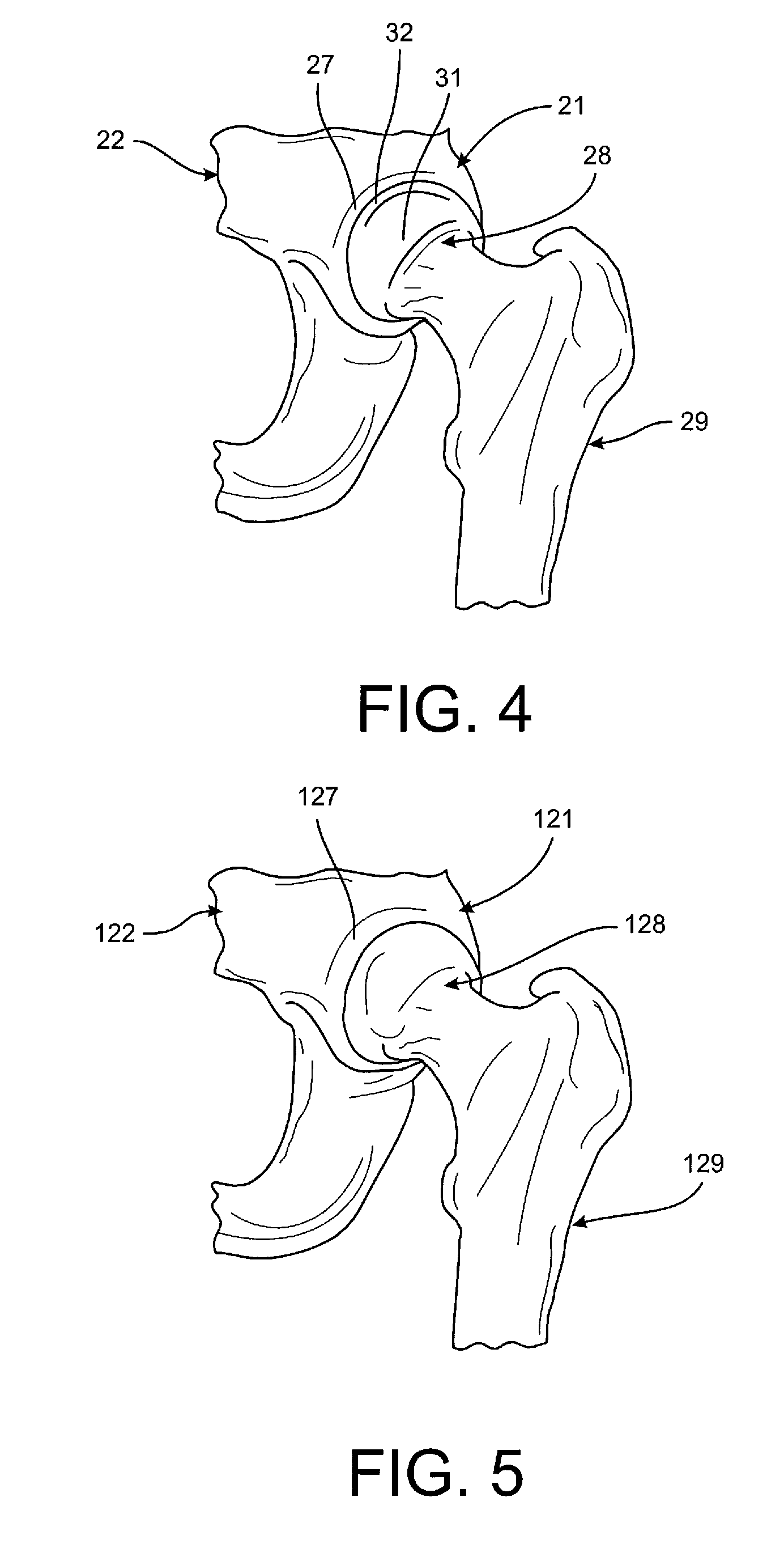Surgical Robotic Systems with Manual and Haptic and/or Active Control Modes
a robotic system and robotic technology, applied in the field of surgical robotic systems, can solve the problems of controllers may not allow the reamer b, active and passive control of the robotic system, and limited control over the cutting tool
- Summary
- Abstract
- Description
- Claims
- Application Information
AI Technical Summary
Benefits of technology
Problems solved by technology
Method used
Image
Examples
Embodiment Construction
[0023]Surgical robotic systems are used in many types of surgery, including bone preparation for joint restorations, such as artificial and natural replacements, joint resurfacing of knees, shoulders, elbows, hips, wrists, spines, jaws, etc. Surgical robotic systems are also used for revisions of previous interventions, preparations and placements of temporary or permanent structures such as pins, anchors, rods, plates and other types of fixations. While the primary example disclosed in FIGS. 1-7 is directed toward a total hip arthroplasty, the systems and methods disclosed herein are applicable to bone preparations for joint restorations in general, skeletal corrections, corrective bone applications, osteotomies, revisions of previous interventions, preparation and placement of temporary structures, preparation in placement of permanent structures and combinations thereof.
[0024]Turning to FIG. 1, a robotic arm is shown schematically at 20 and is coupled to a surgical tool 23, in th...
PUM
 Login to View More
Login to View More Abstract
Description
Claims
Application Information
 Login to View More
Login to View More - R&D
- Intellectual Property
- Life Sciences
- Materials
- Tech Scout
- Unparalleled Data Quality
- Higher Quality Content
- 60% Fewer Hallucinations
Browse by: Latest US Patents, China's latest patents, Technical Efficacy Thesaurus, Application Domain, Technology Topic, Popular Technical Reports.
© 2025 PatSnap. All rights reserved.Legal|Privacy policy|Modern Slavery Act Transparency Statement|Sitemap|About US| Contact US: help@patsnap.com



